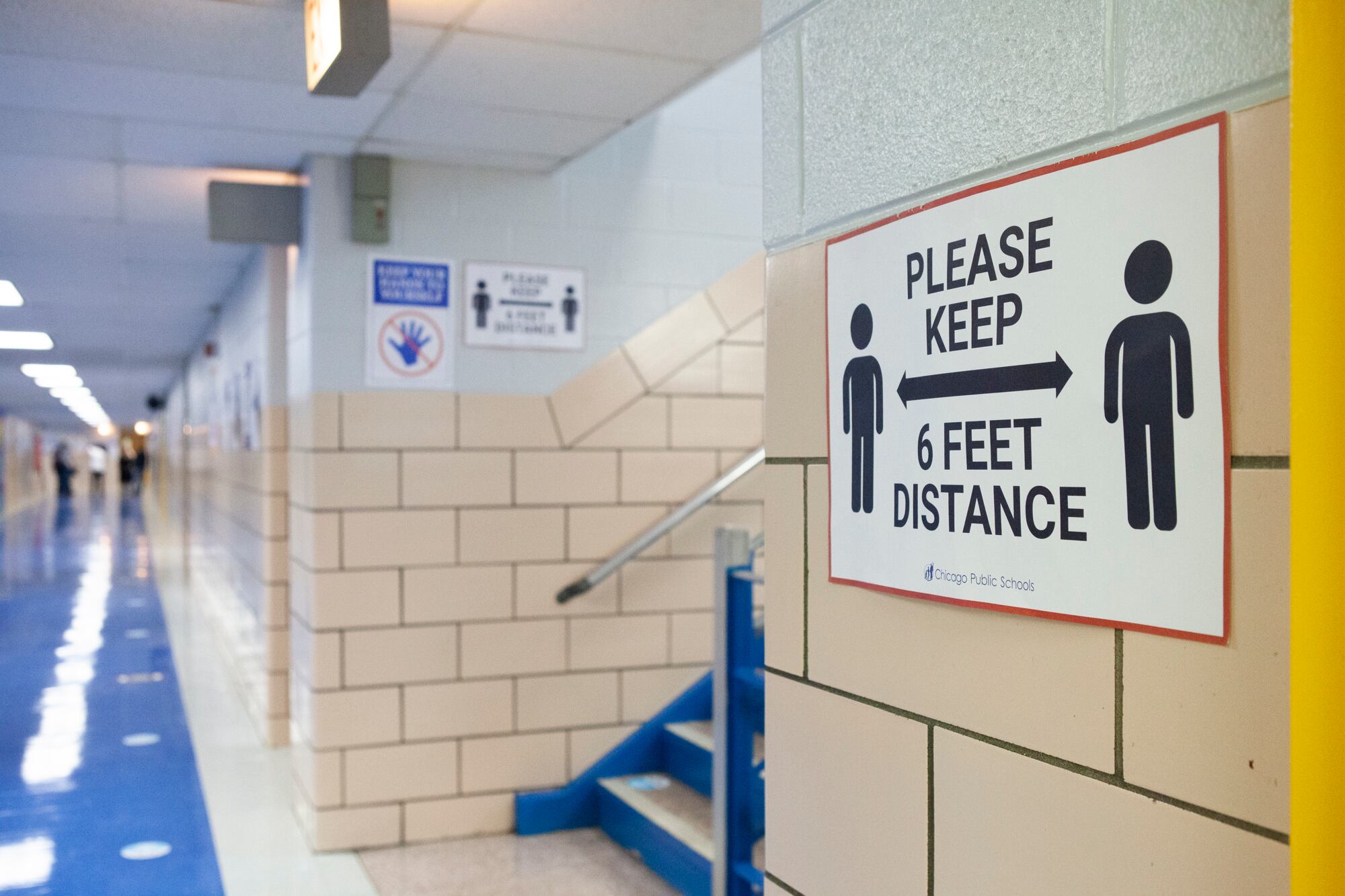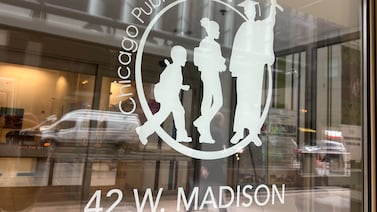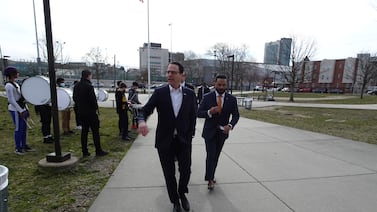Chicago plans to reopen schools in January and February even if the majority of its students choose to continue learning virtually, the city’s school chief said Wednesday.
Teachers also will be asked to return unless they request formal leave for family or medical reasons.
“The way I look at it, we’re crafting a plan for 100% of wishes,” Chicago Public Schools CEO Janice Jackson told Chalkbeat in a wide-ranging interview about the city’s reopening plans. “Parents who want to continue with remote learning because their children are thriving will continue to have that option. But families who feel that in-person instruction is best, or families who don’t have a choice — parents who are essential workers deserve an option too — we will provide that.”
Chicago will soon get an updated barometer of its families’ wishes, with families of elementary and middle school students supposed to inform the district next week of their choice to continue learning virtually or return to campuses. But Jackson made clear that, while those numbers will help the city plan, they won’t affect its overall decision making — even as the teachers union says low opt-in rates from earlier surveys should have convinced the district to keep school doors closed.
“We have to shift from looking at just percentages,” Jackson continued, acknowledging that low opt-in percentages among Black and Latino families were cited as one of the reasons district leaders initially delayed a September reopening. “I know we focused on that in the summer, but at the end of day, even if it’s 40% or 20%, essentially we’re talking about tens of thousands of people in this city who want an option other than what we’re offering.”
Across the country, several school districts have decided to reopen schools even as the majority of parents choose remote learning. That presents a conundrum for districts and school leaders: How to deliver in-person instruction while addressing the quality of remote learning for the majority of students who choose to remain online. There’s also the daunting task of how to convince teachers to sign on to return amid rising COVID-19 positivity rates and criticism from the union that represents them. Citywide, the positivity rate is around 12%, but in some low-income neighborhoods on the West Side, rates are hovering around 20%.
“There have been two surveys, one last summer, and one this fall, where parents said, ‘No thank you.’ What they have said, very clearly, is that they want remote learning,” said Stacy Davis Gates, the union’s vice president, in an interview Tuesday on WBEZ’s Reset. “We have to delve into the reasons why families are reluctant to return to school buildings and use that to build a plan for safe reopening. You can reopen a building — that doesn’t mean that families will follow.”
Families of children in kindergarten through eighth grade are supposed to inform the district next week of their choice: to continue learning virtually until at least April, or return to campuses by Jan. 11 for pre-kindergartners or special education students and Feb. 1 for kindergarten through eighth grade.
Anecdotally, some schools have reported that they haven’t heard yet from large numbers of parents. The district’s default position for families that don’t return surveys will be to continue with remote learning, and it will double down on outreach for surveys as the due date approaches.
There’s no date set yet for high school students to return to campuses. Jackson said Wednesday that district leaders are convening a group of high school administrators to discuss options. Some high schools are under enrolled and would have capacity for social distancing and small class sizes. Other larger high schools might not have the same flexibility. (Middle school students who attend academic centers housed in high schools will be notified of plans in mid-January.)
Chicago is on its third reopening attempt. The district initially planned to reopen buildings under a hybrid model in September, but it delayed that plan late in the summer, citing concerns from families. The district’s second reopening push, timed for November, ended up delayed among rising rates and pushback from the city’s teachers union. October surveys showed that about 1 in 3 prekindergarten students and children with disabilities planned to return to campuses, with the majority opting to continue learning at home.
Chicago has since made some adjustments to its reopening plan. The latest iteration calls for most students to attend classes two days a week in small groups called “pods” and for teachers to provide simultaneous instruction to children in the classrooms and those at home.
Asked about logistics of trying to teach live and remotely at the same time — a question that has surfaced often among parents’ groups and in conversations with teachers — Jackson said the model has emerged as the dominant one among districts, and local private and parochial schools, that her team has studied.
“I don’t want people to think that I don’t understand this will be a steep learning curve and that there won’t be learning demands for our teachers,” Jackson said. “The district will be providing professional development for our teachers and, like with remote learning, we expect thousands of them to take advantage of that. We’re also looking for schools to do professional development that is unique to their environment, things like scheduling and what the setup will look like in their classroom. We want to give our teachers tools and tips on how to make this work.”
As for whether schools will have the flexibility to keep some teachers working remotely — if, say, no students opt to return in a particular classroom — Jackson said teachers will still be expected to return to buildings if they have not filed a medical leave request under the federal Families and Medical Leave Act.
“All staff will be expected to return, with exception of people who have waivers to FMLA accommodations — we most certainly will respect those,” she said. “We have to create a pathway back to in-person instruction that starts with our staff returning to schools, and we don’t want to incentivize one model over the other by giving that type of flexibility over staffing. The first step is getting the adults back into classroom and then also making sure we create a safe environment to bring kids back — an environment where we can educate them properly.”
The city’s teachers union has repeatedly criticized the district for failing to hammer out a written agreement that could detail safety precautions and staffing guidelines and particulars of instruction in this unusual time.
“We do not have a reopening agreement with CPS. At this time, the mayor and Chicago Public Schools have decided to do this alone,” Gates said this week.
Jackson said district leaders are in early conversations with the union about specifics around simultaneous instruction, but the time has passed to negotiate on the basic point of reopening buildings — something the union has challenged through a series of labor board grievances.
“The question of whether students should be in school — we’re past that point. The mayor, the board, many of the leaders of CPS, many parents feel like we need to be back in school,” Jackson said.
Lower-than-hoped opt-in rates have not deterred efforts to reopen campuses in other cities, but rising positivity rates have. In Detroit, only 1 in 4 students chose to return to school buildings this fall; in November, the district suspended in-person learning until January amid rising cases.
In New York, just under half of the city’s 1 million students chose to return to buildings when schools opened in October, though educators said anecdotally that some students who opted for in-person learning did not show up. Schools are set to reopen there next week for elementary students, while middle and high schoolers don’t yet have a return date.







